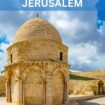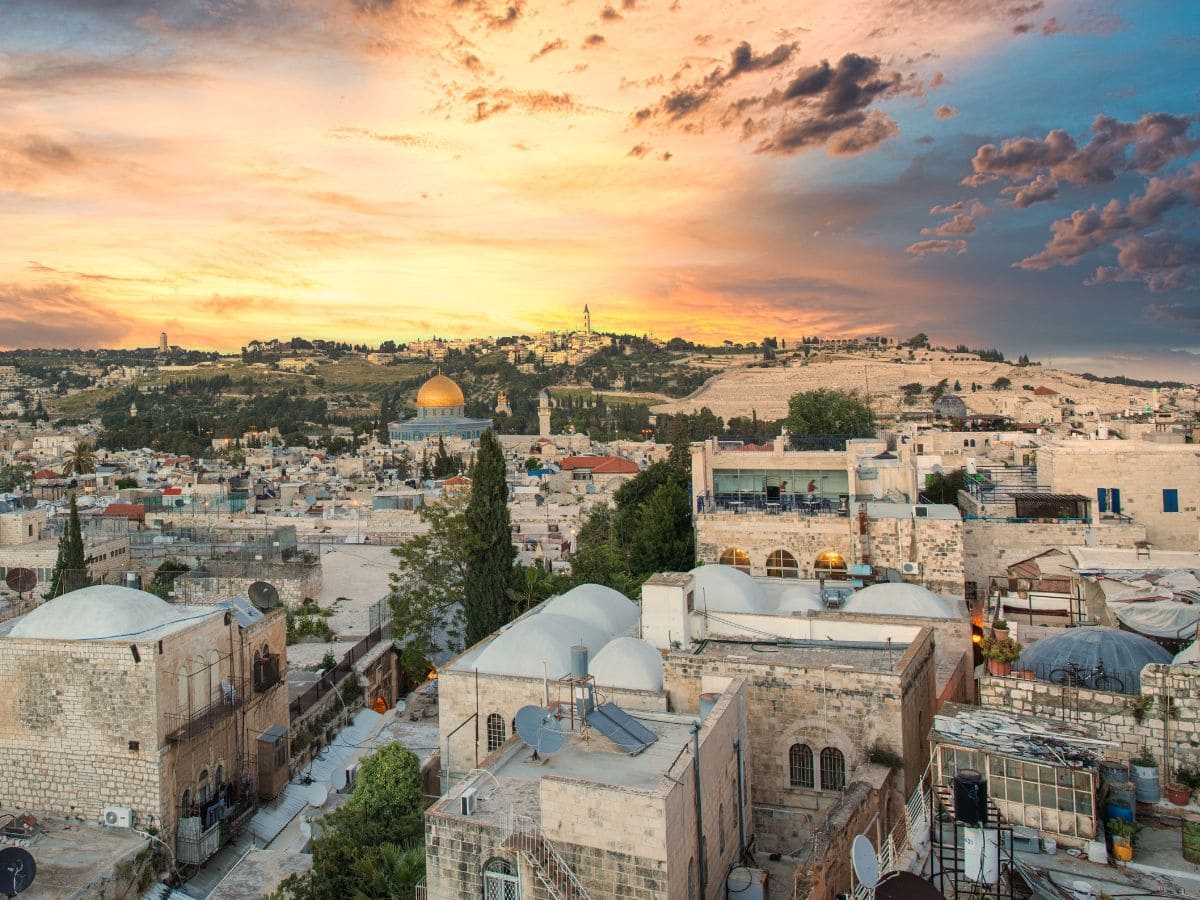
Go World Travel is reader-supported and may earn a commission from purchases made through links in this piece.
As Easter approaches, many Christian tourists contemplate a trip to Jerusalem, Israel. For that’s where the “Via Dolorosa”, the “Way of Suffering”, is located. The Via Dolorosa is not a street but a winding route in the Old City of Jerusalem.
It is thought to be the route Jesus took to His crucifixion. Therefore, it’s considered to be a sacred place of Christian pilgrimage.
Many visitors like to walk this specific route, with its fourteen designated stations, in the footsteps of Christ. Having done this walk of about half a mile myself, I found it to be a profoundly moving experience.
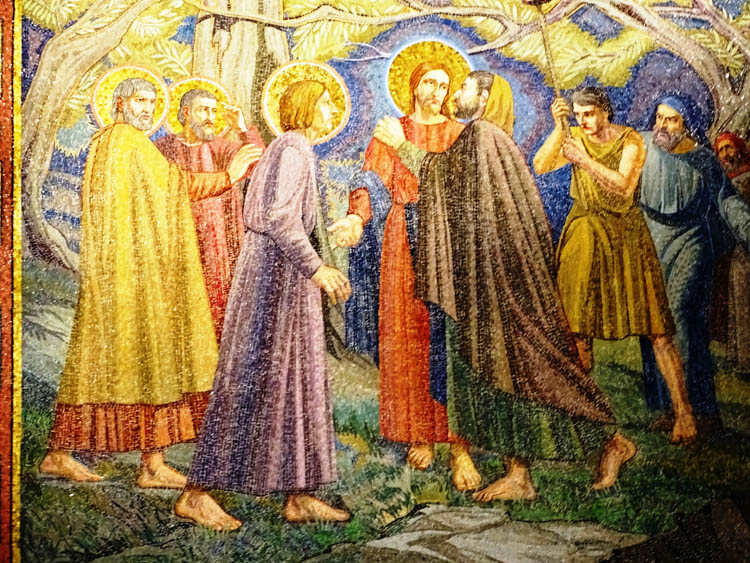
The Beginning
After dining with His disciples at “The Last Supper”, Jesus went to the Garden of Gethsemane. This is the place at the foot of the Mount of Olives, where He was betrayed by Judas, surrendered to the Romans and sentenced to die by crucifixion.
The Via Dolorosa begins, then, in this area. Here is found the Chapel of Condemnation where Jesus was sentenced to death. Also here is the Chapel of the Flagellation, where He was beaten by Roman soldiers and told to carry a heavy wooden cross to the actual place of execution.
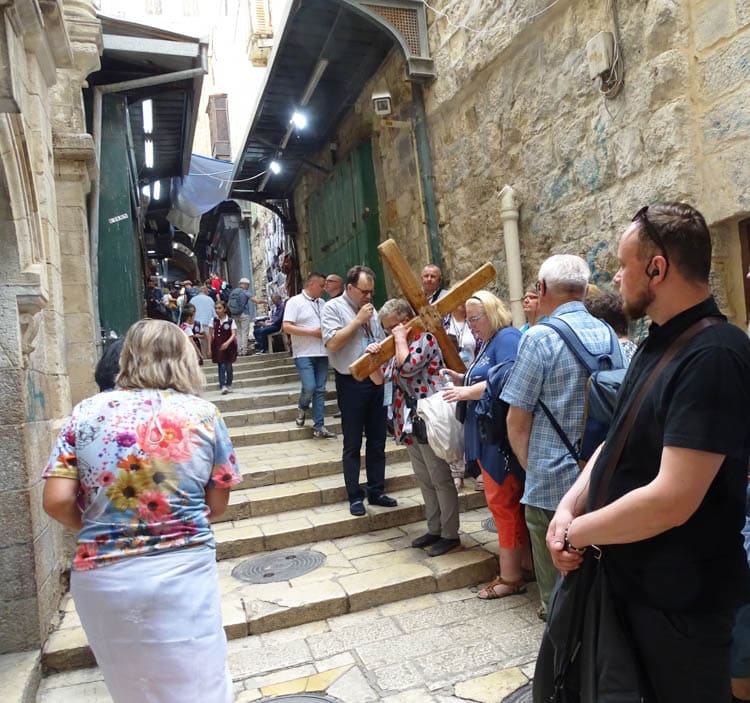
The Route
On any Friday, hundreds of Christians take part in the sacred procession, stopping at the 14 Stations. These walks are organized and led by Franciscans.
However, there are groups who do this walk on any day of the week. Some of the groups even have a member carry a symbolic wooden cross. They may also sing or pray as they march along.
Best Tips & Tools to Plan Your Trip
It’s best to wear modest clothing for this pilgrimage, including covered shoulders and knees. The route is open year-round. However, you can probably imagine what kind of crowd there would be on the Via Dolorosa on Good Friday.
One of the surprises that I found along this route was that it followed a narrow, busy marketplace. Expect to find lots of shops, market stalls and noise along the way. You’ll also find souvenirs and interesting foods, including, falafel, hummus and kunafa.
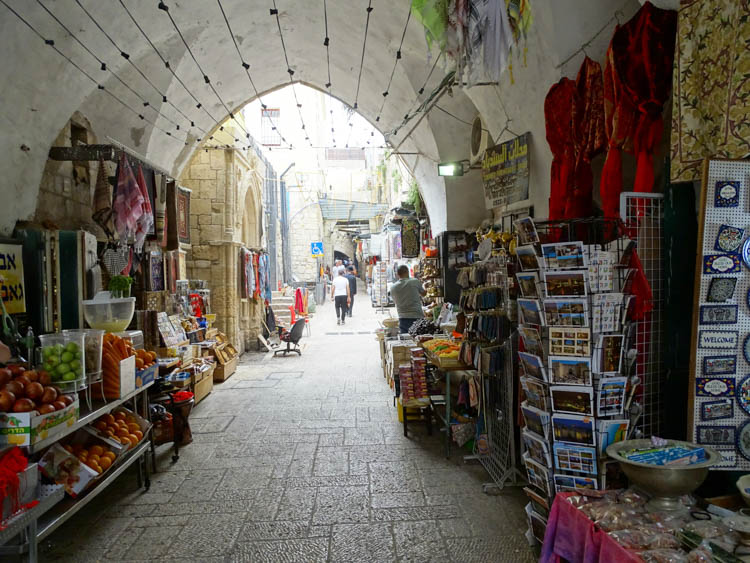
As I walked in Christ’s footsteps, I passed the three stations where He fell under the heavy weight of the cross (stations #3, #7 and #9). It is believed that Jesus met His mother at Station #4. Then at Station #5, Simon of Cyrene helped Jesus carry the cross.
Station #6 is the spot where St. Veronica wiped Jesus’ face with a cloth that left a facial image forever imprinted on that cloth. That sacred relic, the “Sudarium Veronica”, is now in St. Peter’s Basilica in Rome. There’s also a Church of the Holy Face at station #6.
At Station #8, I found the Monastery of St. Charalambos. It was on this spot that Jesus consoled the mourning, weeping women of Jerusalem. Station #9 is adjacent to the Church of the Holy Sepulchre, where Jesus was crucified and buried.
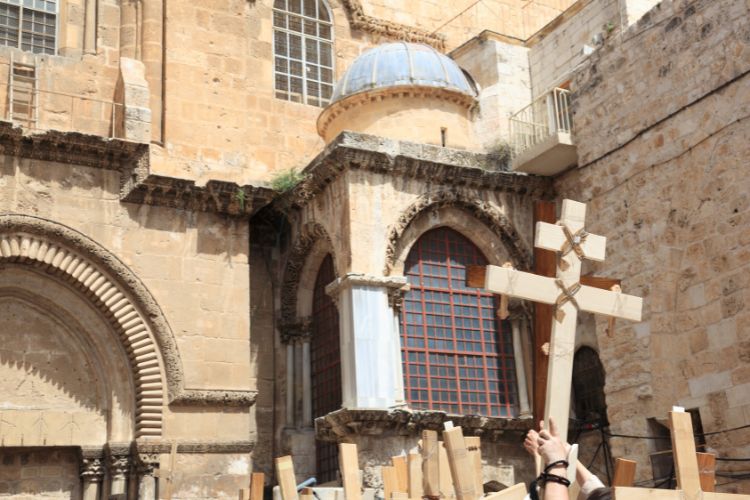
Arriving at the Church of the Holy Sepulchre
All five of the last Stations of the Cross are inside the Church of the Holy Sepulchre. Station #10 is at the entrance, in the room called the Chapel of Franks.
Station #11, in the church’s interior, is at Golgotha or Calvary. This is the hill where Jesus was nailed to the cross. The Chapel of the Nailing to the Cross is located here.
At Station #12, the crucifixion altar is located in the Chapel of the Crucifixion. There’s a large statue of Christ on the cross here. Underneath this altar is a small disc that marks the spot where the cross stood. Pilgrims often kneel and kiss this sacred location. The rock of Calvary is displayed in a glass case by the altar.
The body of Jesus was removed from the cross and placed on the stone of anointing, which is Station #13. Pilgrims often bow and kiss this sacred place, too. Above the stone, are several lamps, donated by the various denominations.
Station #14, the final Station of the Cross, is in the large Rotunda. The empty tomb of Jesus is located within a smaller inner chamber with a marble lid covering the tomb. The body of Jesus remained in the tomb for three days, and then He was resurrected.
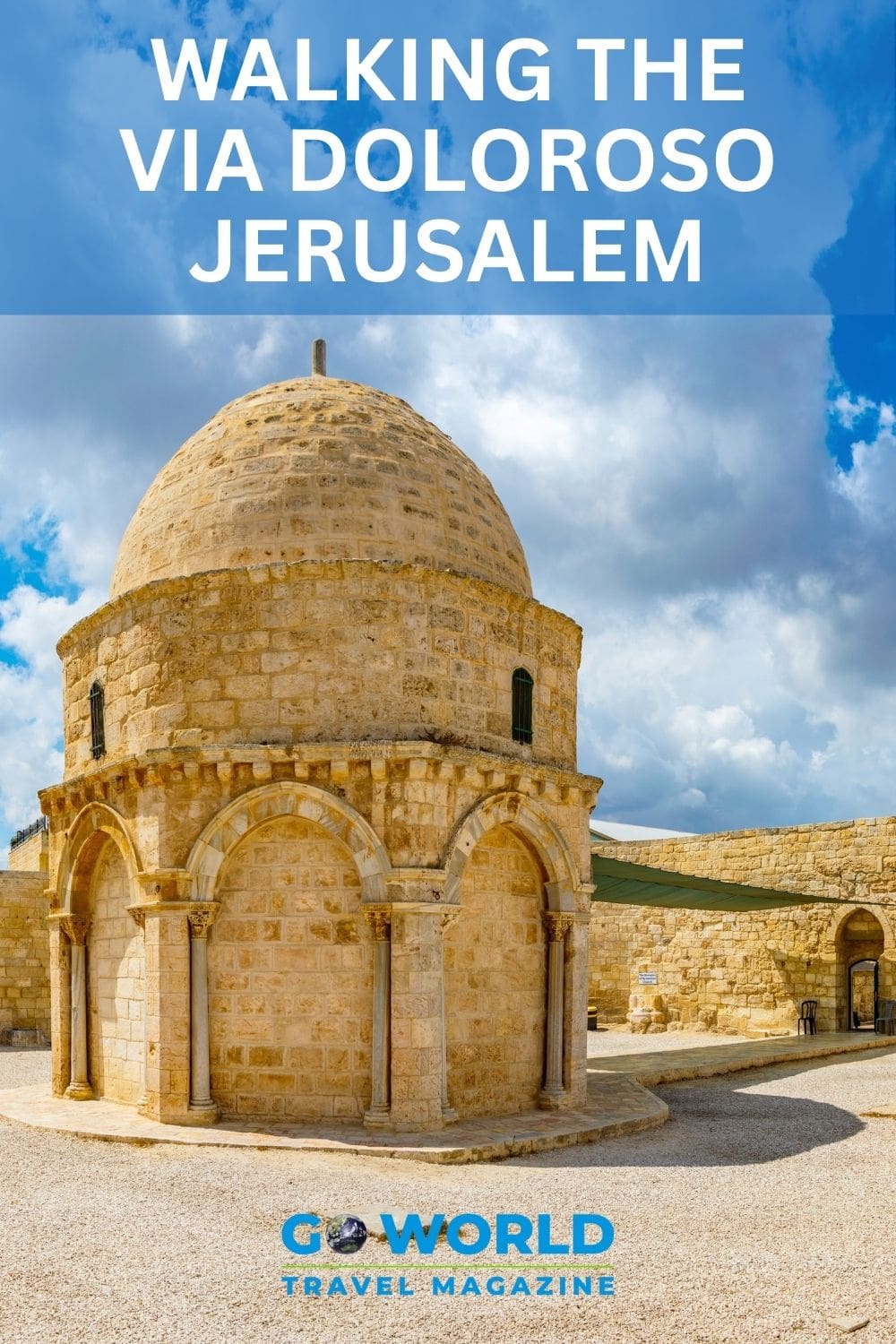
Holy, Holy, Holy
Two of the holiest sites in Christianity are said to be in the Church of the Holy Sepulchre, for it’s the site of the crucifixion and of Jesus’ empty tomb. Therefore, expect large crowds and line-ups here, particularly when trying to view the tomb itself.
However, it’s not clear that Jesus was buried in this specific location. There are alternative theories, including a nearby Garden Tomb. When I visited the Church of the Holy Sepulchre, a priest showed me a nearby underground cave which is the kind of location that was often used for burial at that time.
It’s obviously unclear as to whether all these Stations of the Cross are completely accurate. However, isn’t it more important that we simply remember the events of Good Friday?
The Chapel of the Ascension
This shrine is located on Jerusalem’s Mount of Olives. Early Christians began to gather at a small cave church on the Mount of Olives to commemorate His ascension. Eventually, this Chapel of the Ascension was built.
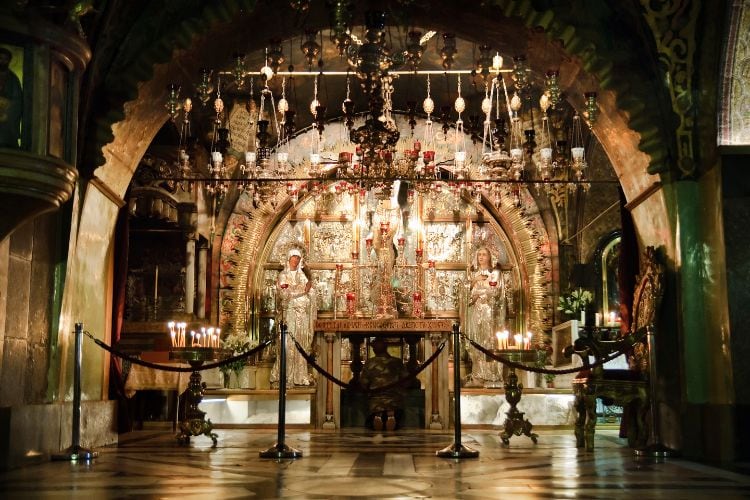
The Old City of Jerusalem
Now a UNESCO World Heritage Site, the Old City of Jerusalem, a tiny, walled area, is divided into four quarters: the Christian, Jewish, Muslim and Armenian Quarters. The Via Dolorosa and the Church of the Holy Sepulchre, as described here, are most important to Christians.
However, the Dome of the Rock and the Al-Aqsa Mosque are religiously significant to Muslims. Plus, the Temple Mount and the Western Wall are especially significant to the Jewish faith.
Indeed, the Old City of Jerusalem, Israel is important to Christianity, Judaism, and Islam. Tourists visiting this area are encouraged to stop at the Visitor Information Center at the Jaffa Gate. Here they will have free maps, brochures, and tour information.
For More Information: www.touristisrael.com/old-city-jerusalem
Author Bio: John is a freelance travel writer and photographer who enjoys travelling the world and writing about his adventures. He has written weekly travel features for a group of community newspapers, presented several travelogues, and is the author of two major cycling books: “Cycling Canada” and “Cycling the USA”
- What It’s Like to Live as an Expat: Lake Chapala, Mexico - April 18, 2024
- Top 5 Spots for Stargazing in North Carolina - April 17, 2024
- The Low-Key Magic of Ghent, Belgium - April 17, 2024

